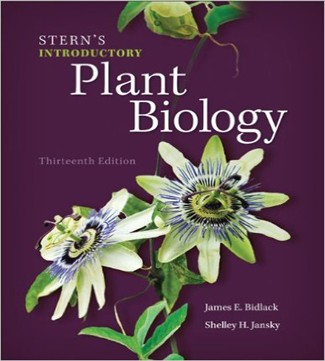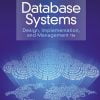Stern’s Introductory Plant Biology 13th Edition Bidleck Jansky Stern Test Bank
$35.00 Original price was: $35.00.$26.50Current price is: $26.50.
Stern’s Introductory Plant Biology 13th Edition Bidleck Jansky Stern Test Bank
This is completed downloadable of Stern’s Introductory Plant Biology 13th Edition Bidleck Jansky Stern Test Bank

Product Details:
- ISBN-10 : 0073369446
- ISBN-13 : 978-0073369440
- Author; Bidleck Jansky Stern
This introductory text assumes little prior scientific knowledge on the part of the student. It includes sufficient information for some shorter introductory botany courses open to both majors and nonmajors, and is arranged so that certain sections can be omitted without disrupting the overall continuity of the course. Stern emphasizes current interests while presenting basic botanical principles. This latest edition incorporates measurable learning outcomes and updated readings. Students will be introduced to the new classification of plants and plant-related species, integration of biotechnology into several chapters and inclusion of new text boxes addressing the areas of ecology, evolution and molecular biology. New photos have replaced older pictures or have been added also.
With this edition we introduce McGraw-Hill Connect® Botany, a web-based assignment and assessment platform that gives students the means to better connect with their coursework, with their instructors, and with the important concepts that they will need to know for success now and in the future. With McGraw-Hill Connect Botany, instructors can deliver interactive assignments, quizzes and tests online. Nearly all the questions from the text are presented in an autogradable format and tied to the text’s learning objectives.
Table of Content:
Chapter 04
Tissues
Multiple Choice Questions
- Which of the following is a meristematic tissue?
A.parenchyma
B. cork cambium
C. xylem
D. collenchyma
E. epidermis
Blooms: 1. Remember
Learning Outcome: 04.01 List and describe plant meristems and where they are found.
- Which tissue is derived from the apical meristem?
A.protoderm
B. cork cambium
C. periderm
D. secondary phloem
E. secondary xylem
Blooms: 1. Remember
Learning Outcome: 04.01 List and describe plant meristems and where they are found.
- In grasses and related plants, intercalary meristems are found in the vicinity of
A.axillary buds.
B. roots.
C. nodes.
D. cuticles.
E. leaf tips.
Blooms: 1. Remember
Learning Outcome: 04.01 List and describe plant meristems and where they are found.
- In which location would an intercalary meristem be found?
A.apical regions
B. base of grass leaves
C. tips of leaves
D. tips of roots
E. shoot tips
Blooms: 2. Understand
Learning Outcome: 04.01 List and describe plant meristems and where they are found.
- Primary tissues can be traced to their origin in
A.lateral meristems.
B. vascular cambium.
C. cork cambium.
D. apical meristems.
E. intercalary meristems.
Blooms: 1. Remember
Learning Outcome: 04.01 List and describe plant meristems and where they are found.
- Actively dividing cells can be found in
A.meristems.
B. xylem tissue.
C. epidermal tissue.
D. center of stems.
E. phloem tissue.
Blooms: 1. Remember
Learning Outcome: 04.01 List and describe plant meristems and where they are found.
- Which of the following is a meristematic tissue?
A.parenchyma
B. periderm
C. cork cambium
D. epidermis
E. collenchyma
Blooms: 1. Remember
Learning Outcome: 04.01 List and describe plant meristems and where they are found.
- The primary activity of cells of meristematic tissues is ______________________.
A.support
B. transport of water
C. photosynthesis
D. cell division
E. defense
Blooms: 2. Understand
Learning Outcome: 04.01 List and describe plant meristems and where they are found.
- Lateral meristems, such as ________________, produce tissues that increase the girth of a plant.
A.vascular cambium
B. secondary phloem
C. periderm
D. parenchyma
E. collenchyma
Blooms: 1. Remember
Learning Outcome: 04.01 List and describe plant meristems and where they are found.
- Primary meristems produce tissues that ________________.
A.increase the width of a plant
B. increase the mass of a plant
C. increase the length of a plant
D. lead to the production of bark
E. produce the cork cambium
Blooms: 2. Understand
Learning Outcome: 04.01 List and describe plant meristems and where they are found.
- Groups of cells that have a similar structure or common function are called ______________.
A.tissues
B. meristems
C. differentiated cells
D. primary meristems
E. secondary meristems
Blooms: 2. Understand
Learning Outcome: 04.02 State the difference between simple tissues and complex tissues and provide examples of each.
- Which of the following tissues has support as one of its primary functions?
A.phloem
B. vascular cambium
C. parenchyma
D. cork cambium
E. collenchyma
Blooms: 1. Remember
Learning Outcome: 04.03 Describe three types of simple tissues and where they may be found in the plant.
- Which of the following cells has a relatively thick wall?
A.companion cell
B. parenchyma cell
C. sclereid
D. sieve-tube element
E. vascular cambium cell
Blooms: 1. Remember
Learning Outcome: 04.03 Describe three types of simple tissues and where they may be found in the plant.
- Parenchyma cells that develop irregular extensions of the cell wall that greatly increase the surface area are called
A.transfer cells.
B. sclereids.
C. aerenchyma.
D. tracheids.
E. lenticels.
Blooms: 1. Remember
Learning Outcome: 04.03 Describe three types of simple tissues and where they may be found in the plant.
People Also Search:
stern’s introductory plant biology 13th edition
stern’s introductory plant biology
stern’s introductory plant biology 13th











